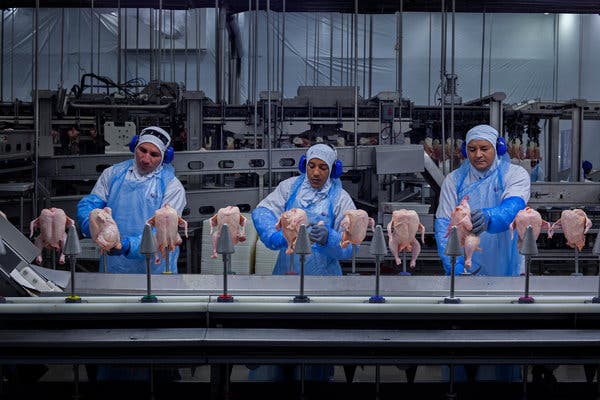
Tariffs and Duties on Frozen Chicken Exports
As we continuously see the rapidly evolving global food chain, frozen chicken remains one of the most traded animal protein across borders. With growing demand in emerging and developed markets alike, exporters and importers both must understand the full spectrum of tariffs and duties that govern this international trade.
Missteps in tariff classification, duty calculation, or documentation can result in costly penalties, border delays, or even rejected shipments. For those navigating this sector – whether poultry producers in Thailand, Brazil or exporters targeting lucrative markets like the Europe Union or the United States – it is crucial to grasp how duties and tariffs impact the profitability and legality of operations.
This guide is detailed into the structure of customs duties, how tariffs are imposed, and the trade policies shipping the global poultry industry.
What are Tariffs and Duties in the Context of Frozen Chicken?
Tariffs are taxes imposed by governments on imported goods. Duties refer to the actual payment made based on the tariff schedule. These are often calculated as a percentage of the products’s customs value or a specific charge per unit ( Specific duties).
In the frozen poultry sector, duties often depend on:
* Country of Origin
* Harmonized System (HS) code classification
* Existing trade agreements or preference schemes
The Harmonized System is maintained by the World Custom Organisation and assigns codes to products based on their material and intended use. For example
* HS code for frozen chicken cuts: 0207.14
You can verify the latest tariff rate for different countries using the World Integrated Trade Solution (WITS) tool or the EU TARIC Database
Tariff Structures in Major Importing Markets
a. European Union (EU)
The EU has a complex system of Common External Tariffs. Poultry imports are subject to:
* Specific tariffs based on quantity (€/ton)
* Quota-based systems: Only limited quantities of chicken can enter duty-free or at reduced rates
* Sanitary and Phytosanitary (SPS) requirements
For example, imports exceeding tariff-rate quotas (TRQs) can face duties exceeding 1000 €/ton. You can explore the latest details on poultry tariffs via the EU Access2Makets portal.
b. United States
In the US, the Harmonized Tariff Schedule (HTS) determines the duty:
* HTS Code for frozen chicken cuts:0207.14.10 or 0207.14.20
* Most Favored Nation (MFN) rate: 8.8 cents/kg for many chicken categories
Check accurate rate using the USITC Dataweb. The USDA’s FSIS Import Library is also an essential resource for understanding sanitary inspection requirements.
Latest Changes in Tariffs on Poultry Exports by Major Markets (EU, USA, China)
In 2025, the world poultry trade landscape has experienced significant shifts due to escalating trade tensions and policy changes among major economies. Exporters and importers must stay informed about these developments to navigate the complexities of international trade effectively.
European Union: Strategic Retaliatory Measures
The European Union (EU) has implemented a series of retaliatory tariffs in response to U.S. trade policies. Notably, the EU has imposed a 25% tariff on U.S. poultry imports, among other goods, as part of a broader strategy to counteract U.S. Tariffs on EU exports. These measures aim to protect EU industries and prompt negotiations for fair trade practices.
The EU’s approach includes a public consultation on potential counter – measures targeting U.S. imports valued at €95 billion, with final decisions expected by late June or early July. This strategic planing underscores the EU’s commitment to defending its economic interests while seeking diplomatic resolutions.
United States: Escalation of Tariff Policies
Under the current administration, the United State has escalated its tariffs policies, significantly impacting global trade dynamics. In April 2025, the U.S. imposed a 20% tariff on nearly all EU exports, later reducing it to 10% for a 90-day negotiation period. These action have prompted retaliatory measures from trade partners, including the EU and China.
The U.S. has also increased tariffs on Chinese imports, raising the rate from 34% to 84%, and subsequently to 125%, in response to China’s retaliatory tariffs. These developments have heightened tensions and introduced greater uncertainty into international trade relations.
China: Comprehensive Retaliation and Trade Adjustments
China has responded to U.S. tariff increases with comprehensive retaliatory measures. Effective March 10, 2025, China imposed a 15% tariff on U.S. chicken, wheat, corn, and cotton, and a 10% tariff on sorghum, soybeans, pork, beef, aquatic products, fruits, vegetables, and dairy products. These actions reflect China’s strategic approach to safeguarding its economic interest amid escalating trade disputes.
Additionally, China has raised its retaliatory tariff rate on U.S. – origin goods from 34% to 84%, effective April 10, 2025. These measures have significant implications for global supply chains and necessitate careful consideration by exporters and importers engaged in trade with China.
Implications for Global Poultry Trade
The recent tariff changes among the EU, USA, and China have profound implications for the global poultry trade. Exporters must navigate a complex landscape of tariffs and trade policies, requiring diligent compliance and strategic planning. Importers need to assess the impact of these tariffs on supply chains and pricing structures.
Staying informed about policy developments and engaging with trade experts can help businesses adapt to the evolving trade environment. Utilizing resources such as the World Trade Organization and national trade agencies can provide valuable insights and guidance.
Conclusion
The dynamic nature of international trade in 2025 underscores the importance of vigilance and adaptability for businesses involved in poultry exports. Understanding the latest changes and their implications is crucial for maintaining competitiveness and compliance in the global market.
For more detailed information and updates on trade policies, consider consulting the following resources:
U.S International Trade Commission
By leveraging these resources and staying abreast of policy changes, businesses can navigate the complexities of international trade and position themselves for success in the market of poultry worldwide.
